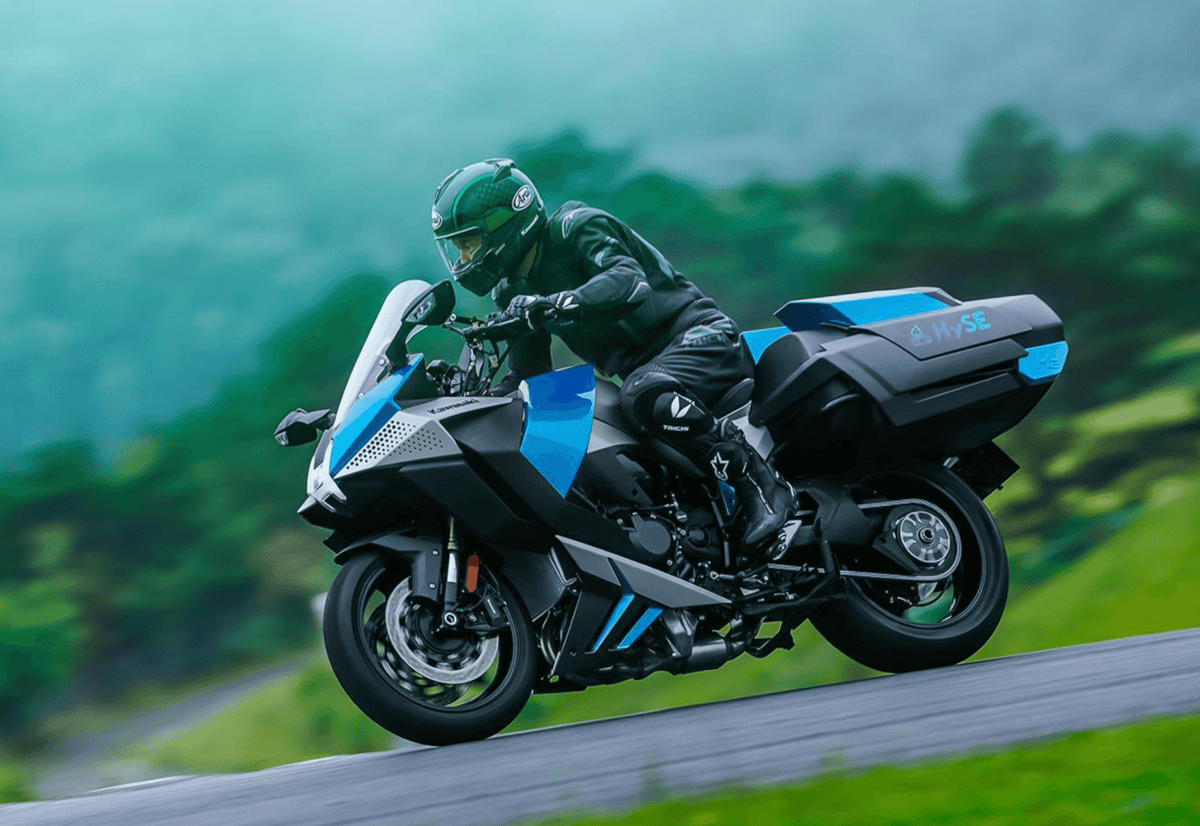Kawasaki Unveils Hydrogen-Powered Motorcycle at Suzuka Circuit
Key Ideas
- Kawasaki Motors showcased a hydrogen internal combustion engine-powered motorcycle at Suzuka Circuit, equipped with a redesigned chassis to accommodate hydrogen storage.
- The hydrogen-powered Ninja H2 uses a modified Ninja 998cc engine, offering riders a carbon-neutral option emitting only water vapor and minimal carbon dioxide.
- Satoaki Ichi, the Project Leader for Kawasaki, highlighted the responsive and enjoyable nature of the hydrogen engine, developed with assistance from the research association HySE.
- This innovation aligns with Kawasaki's R&D efforts to introduce hydrogen ICE motorcycles as eco-conscious alternatives for riders by the early 2030s.
Kawasaki Motors recently made a notable breakthrough by unveiling a hydrogen internal combustion engine (ICE)-powered motorcycle at Suzuka Circuit, Japan. The motorcycle, named Ninja H2, was developed as part of a research initiative that began in March the previous year. It features an adapted Ninja 998cc in-line four supercharged engine that has been modified to allow hydrogen injection into the cylinders. Additionally, the bike's chassis underwent redesigning to accommodate the hydrogen storage and supply system seamlessly. The project leader for Kawasaki, Satoaki Ichi, emphasized that the hydrogen engine operates similarly to a traditional gasoline engine, enhancing the rider's control and enjoyment while producing only water vapor and minimal carbon dioxide emissions due to the combustion of engine oil. Ichi also highlighted the quicker and more responsive combustion nature of hydrogen compared to gasoline, providing an enhanced riding experience. The development of this hydrogen-powered motorcycle received support from the research association HySE, focusing on engines, filling, and supply systems for small hydrogen-powered mobility vehicles. This initiative is in line with Kawasaki's research and development efforts to introduce hydrogen ICE motorcycles as a carbon-neutral option for riders by the early 2030s, reflecting the company's commitment to sustainability and innovation in the mobility sector.
